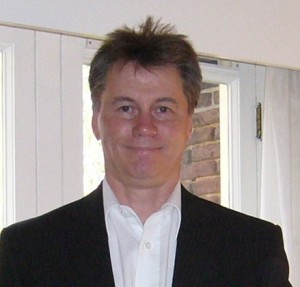SVG Europe Sit-Down: Avid’s Kevin Usher on Orad acquisition and third-party integration
Whilst the acquisition of Orad – and with it the addition of 3D real-time graphics, live production and media management solutions to the Avid Everywhere platform – is perhaps the most significant single development of the year in Avid land, 2015 has actually witnessed continued adoption of the Avid MediaCentral Platform and, beyond that, the ongoing propagation of the Avid Everywhere platform.
As the year draws to a close, director of product and segment marketing, Broadcast & Media Kevin Usher sat down with SVG Europe to assess the business and creative implications of the Orad acquisition, third-party integration and the changing nature of sports production workflows…
How would you characterise overall activity levels for Avid in 2015 compared to last year?
Our acquisition of Orad, announced at NAB back in April, and the focus on integrating those solutions into the Avid MediaCentral Platform has significantly increased customer and partner interest in Avid’s sports solutions offering.
How would you assess the progress made this year by the Avid Everywhere platform in broadcast generally and in sports specifically?
Avid Everywhere is continuing to build momentum through the widespread adoption of the Avid MediaCentral Platform. Over 26,000 users worldwide – from top media organisations to creative teams, and independent professionals – are powering their workflows with creative solutions built upon the platform. The integration of Orad products and solutions into the Avid MediaCentral Platform as part of the new Avid Studio Suite is a clear indicator of the integration points available for our customers today, with much more to come in the future.
What would you say is Avid’s most important development of recent years in terms of helping sports broadcasters achieve more efficient workflows?
The acquisition of Orad is one of the most important developments for Avid sports solutions. We’re now able to provide complete, integrated, end-to-end sports solutions for live event productions, sports studios, sports venues and leagues. With one set of end-to-end sports production solutions on one platform, sports broadcasters benefit from the unparalleled productivity and increased workflow efficiency that the MediaCentral Platform delivers.
In terms of content production and distribution, how do you see sports broadcast workflows changing over the next few years?
We’re expecting sports broadcasters to provision their facilities for 4K content production and delivery. Sports fans will also experience enhancements in the “on the go” viewing experience, as well as enhancements within sports studios with the adoption of virtualised sets integrated with high-resolution creative graphics and delivery systems.
The last few years have seen Avid become much more open to third party integration. What is the future roadmap in this regard?
The Avid MediaCentral Platform is designed for, and encourages, third-party integration. In the near-future you will see Avid placing even more emphasis on third-party product integration and partnerships. The Avid Customer Association is one of the driving forces that enables Avid to work closely with our customers and partners to try to solve the challenges the industry is facing.
If you had to highlight one sports event from recent years that exemplifies the strength of Avid systems, what would it be?
The Avid MediaCentral Platform is at the centre of many of the world’s premiere sports events with the Olympics Games being one of the largest events.
Finally, can you give us a few hints about forthcoming plans?
We continue to focus our efforts on the integration of Orad solutions into the Avid MediaCentral Platform to deliver the best user experience, the highest quality graphics experience, and the tightest integration of all creative tools from acquisition through to distribution and delivery. Avid has the best creative tools and the tightest product integration in the industry, as well as the most open platform, and this remains a key areas of focus for the future.


